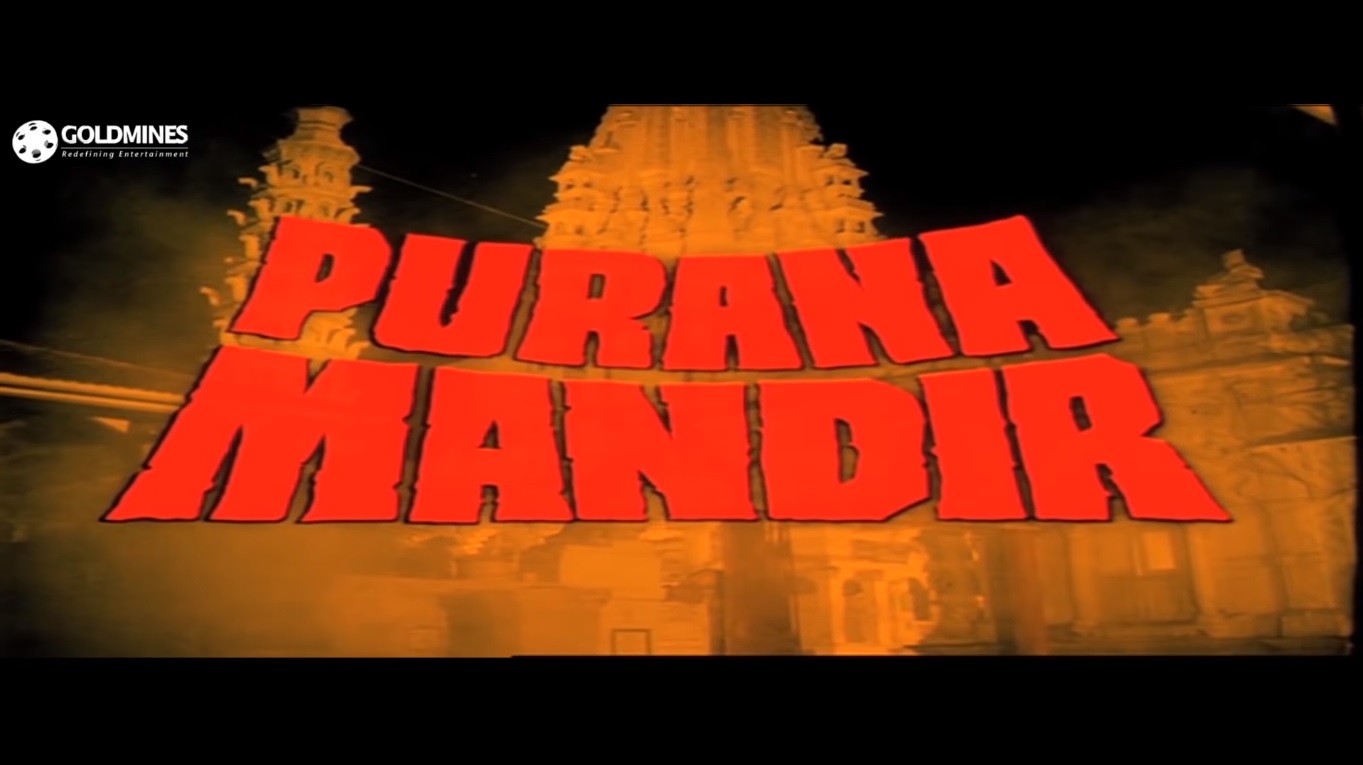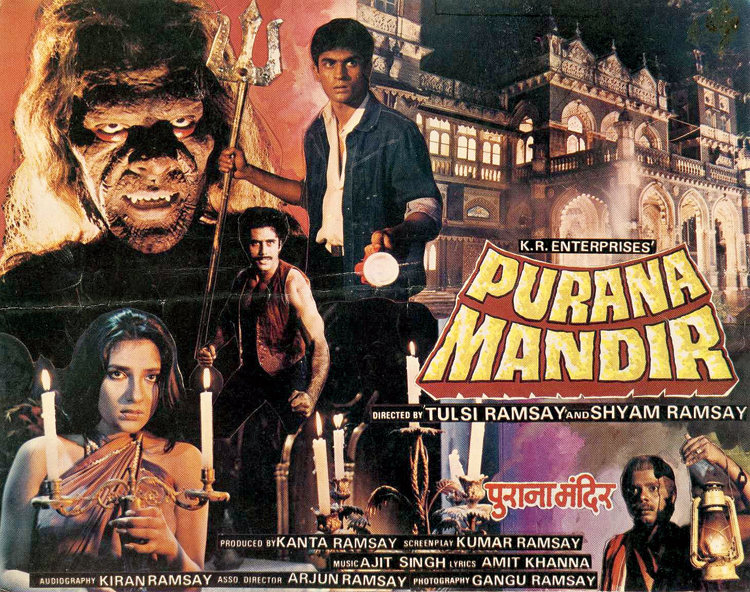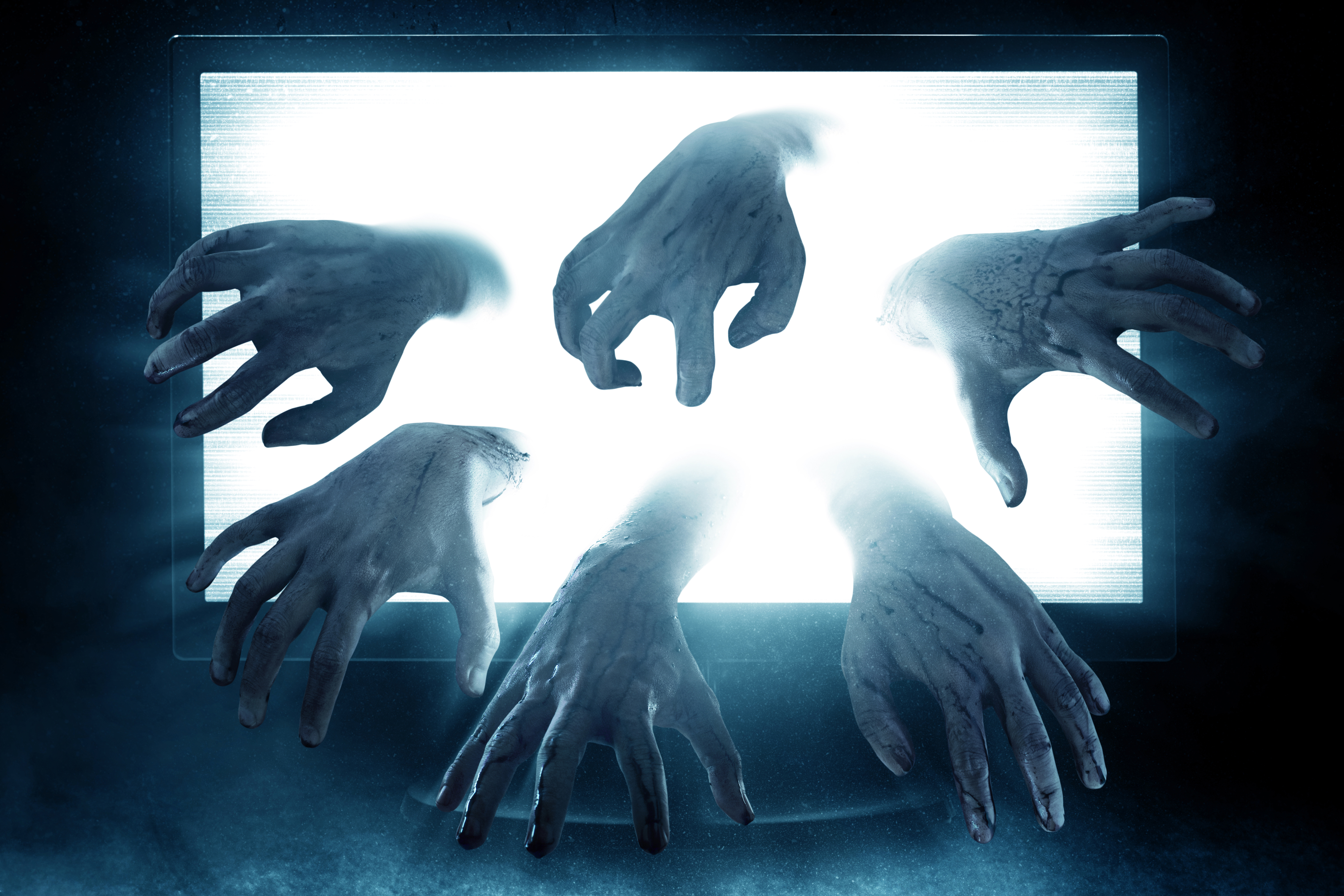Today, many of us like viewing their films, especially when with friends, only to enjoy them ironically. We laugh at the shoddy wig or make-up, chuckle at the over-the-top performances, the lack of finesse in the way these films are shot. But if we attempt to look closely, what stands out in every frame of each of their films is this one family’s intent — to tell a story in the best possible manner knowing they don’t have the adequate resources for it. What’s even more noteworthy is that these films were truly what one may call ‘home productions’ — Ramsay Films was entirely a family-run enterprise in which the seven brothers helmed the most significant departments of filmmaking. Tulsi and Shyam Ramsay were directors, Kumar wrote the screenplays, Gangu was the cinematographer, Ajit was the editor, Kiran managed sound while Keshu produced these films; young men who bolstered the dream their father FU Ramsay had seen when he had produced his first feature in 1954 in a newly independent India.
Despite not finding enough support from within the industry and completing films on shoestring budgets, they always ensured that they put their best foot forward to make the movies engaging and entertaining. At least two songs from their movies are still popular among fans of 1970s-80s Hindi films: Haan Pehli Baar from Aur Kaun? (1979) and Woh Beete Din from Purana Mandir (1984, also their biggest commercial hit). But my favourite will always be the ingeniously worded number from Dahshat (1981) starring Naveen Nischol and Sarika, which went:
Mere pyaar ka meter chal raha, arre dil ka heater jal raha
Tum bekhabar ho is kadar, yu fuse udao na
About ten years ago I spent a couple of weeks at the Film and Television Institute of India in Pune where a close friend was studying then. There, I became friends with many students and the daily chitter-chatter often went on till late every night. Unsurprisingly much of these conversations were dominated by discussions about international cinema, and I always listened with rapt attention. But every now and then someone would bring up a Ramsay Brothers or a Kanti Shah reference and lighten the mood, and amusingly enough almost every young filmmaker who was present there would only be filled with admiration for these men of the movies. Three decades later the Ramsays may had certainly become outdated, but one thing they managed to still do is inspire a young bunch to dream big and think out of the box. These men took the world around us, turned it upside down and created a mythology of their own.
I read somewhere that the next generation of Ramsays is now apparently gearing up to revive their production house and create new content more suited to the Netflix generation. As a Ramsay admirer, I hope that’s true. But in case that doesn’t happen, I’m fairly certain that even a hundred years later the work they have left behind will continue to find its audience and the Ramsay Brothers shall continue to enthrall… even from beyond the grave.
Do Gaz Zameen Ke Neeche, the first horror film which came out of the Ramsay “House of Horrors”, released in 1972, fourteen years before I was born. I was about fourteen, the year must have been either 1999 or 2000, when I discovered the Ramsay Brothers and their universe. As an easily frightened timorous Bengali school boy who was afraid of the dark, I had given the Exorcists and Evil Deads a miss until then. At such a time, the Ramsay films came into my life like a breath of fresh fear. This was the late 90s when cable TV had peaked and was the most sought after form of consuming entertainment. Television watching, however, was a highly regulated activity, with the adults always being in charge of the remote controls in most middle class homes, and the kind of programming a teenager was allowed to watch was monitored closely by parents. The only minor exceptions being the summer and winter school holidays when I’d move to my uncle’s house to spend a couple of weeks with my cousins. It was the newly founded Zee Cinema, if I’m not totally wrong, which had dedicated a slot on Thursday mornings for locally made horror films. And thus, the Ramsay Brothers, entered my life and began to rule my Thursdays.
With just the right mix of gore, jump scares and sleaze (toned down for Indian theatres sans any nudity but enough to excite a 14-year-old), these films became the regular go-to place for risqué entertainment for me and my cousin brother. The plots were uniformly similar in each of their films and the tropes which have now become almost synonymous with the Ramsays, easily identifiable — the eternal good vs bad struggle a healthy dose of black magic, abandoned dilapidated havelis, village graveyards, foggy nights, skimpily clad women and men with a savior complex bigger than Puneet Issar’s biceps and above all, of course, their own league of extraordinary monsters.
From much of the material that’s available on the Ramsays, one thing becomes clear that their work was certainly not acknowledged by mainstream Bollywood. They arrived on the scene at a time when Rajesh Khanna and Dharmendra dominated Indian film screens, and a young actor by the name of Amitabh Bachchan was on the rise. This certainly must have made the lives of the Ramsays far more difficult than we can imagine in today’s digital age when the star system is slowly collapsing. But that didn’t stop them from disrupting the status quo by going against the big boys and banners — managing to scare the bejesus out of a generation of people in a pre-VCR era. This is true especially for people living in Tier-2 cities and towns, who did not have the luxury of watching the Ramsays’ more polished international counterparts, including the Hammer horror movies which certainly were one of the biggest inspirations behind their style of filmmaking.
Sayantan Ghosh is a Delhi-based writer and editor

Purana Mandir that released in 1984 was Ramsay Brothers' biggest commercial hit A screenshot of the film













